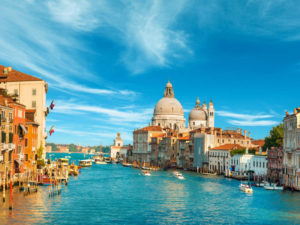You’ve finally made the long-awaited decision to visit Europe, to soak up the culture and create lifelong memories. To help with some of the things you should think about, here are our Top 10 Tips for Travel to Europe.
Surely, there will be plenty to see and experience – so much, in fact, that you already recognize there is no way you’ll be able to do it all no matter how well you plan your time. You’ve even invested in several extra memory cards for your phone and camera because you already know you’ll need plenty of additional storage for all your photos.
But surely there should be more planning than this when it comes to traveling abroad. Conducting some research on your intended destinations is a must so you’ll be prepared. You’ll need to know how to get around each city, as well as what’s available to you when you get there, and all that you’ll need to budget for so you can maximize your experience. A loose itinerary would also be helpful so you won’t miss any of the landmarks, activities, or tours that are most important to you.
 AVOID PEAK SEASON:
AVOID PEAK SEASON:
Summertime, specifically the months of June, July, and August present an opportune time to travel – the weather is good and the kids are out of school so it’s easy to take them along and create a family vacation. But the concept of summer travel isn’t limited to just North America, it is also peak time in Europe. With locals traveling the continent as they embark on their summer vacation combined with incoming tourists who make the trek overseas to see everything Europe has to offer; popular destinations become chaotic with crowds. This causes long lines at landmarks and attractions, such as The Coliseum pictured here, as well as limited vacancies at popular hotels. If you have the option of choosing what time of year to take your trip, we advise booking for spring or wait until the slightly cooler temperatures of autumn.
PREP FOR INTERNATIONAL TRAVEL
To save yourself a lot of time and frustration, ensure that you’ve got your ducks in a row BEFORE you leave home. This includes buying travel insurance for any emergency or potential setback that might arise, and contacting your mobile service provider to set up a cost-effective plan that will allow you to use your phone abroad. Consider buying your Euros (and other foreign currency) from your local bank or foreign exchange rather than using an ATM abroad which will charge you for fees and premium exchange rates.
 PACK A POWER ADAPTER
PACK A POWER ADAPTER
In North America, we’re familiar with appliances that use 110 volts of power. However, European appliances double that with 220 volts. Thankfully, newer appliances are equipped with dual voltage which allows the gadget to travel. However, older razors, hairdryers, curling irons, and laptops won’t fair well if plugged into a European socket, as found in every hotel room. To prevent frying your appliances and having to throw them out, consider investing in an adaptor. Depending on where you are traveling in Europe, it might be necessary to pack both a 2-prong and 3-prong adaptor. Although they’re not cheap, they are certainly cheaper than replacing all your appliances and devices.
PREP YOUR SMARTPHONE
In addition to setting up a roaming plan with your service provider, it’s wise to consider a power bank for charging your phone on the go. As well, consider uploading some helpful apps. For example, a currency conversion app is essential for staying on budget, especially when visiting several countries during the course of the trip, some of which might not have converted to Euros. An excellent suggestion is XE.com which is easy to navigate and can be used offline.
Set Google Translate as an icon on your homepage for ease of access, to help with any language barriers you might encounter. You can also do the same with Google Maps, to get you where you need to go. If traveling by train, which is the most popular mode of transportation in the EU, look for and download a rail planner app. Other apps to consider include a hotel finder, Wi-Fi Finder, Uber, The Fork for locating restaurants, Pretty Streets for locating scenic strolls, and Smart Traveler which is designed specifically for US citizens and provides travel alerts and warnings, as well as Embassy locations.
 TRAVEL BY TRAIN and VALIDATE YOUR TICKETS
TRAVEL BY TRAIN and VALIDATE YOUR TICKETS
In Europe, trains are the easiest and most comfortable way to travel, with tickets available as late as the last minute. Multi-destination passes can be quite affordable when compared to air travel plus you can see more of the countryside while you’re on the ground.
Assuming you have downloaded a rail planner to help schedule your transportation and destinations, you should also know that most countries in the EU, including Germany, France, and Italy, require that you ‘validate’ your train ticket before boarding. Look for a stamping machine near the train platform. Without validation, it’s likely you will encounter problems.
LEARN THE WORD ‘SCHENGEN’
This is a word you’re bound to hear often as you travel the continent, but learning what it means is essential. In short, it refers to the Schengen Agreement, which is comprised of the 26 European countries that have officially terminated passport and border control with other Schengen members. It’s helpful to know which countries will require your passport so that you can be ready for it, such as when you’re exiting or entering the EU from the UK.
 LEARN A FEW PHRASES
LEARN A FEW PHRASES
If you plan on moving around a lot, country to country, the idea of learning a new language for each new city is unrealistic. However, it’s wise to study up on a few key phrases to help you through your trip. The words, ‘hello’, ‘please’, ‘thank up’, ‘help’, ‘do you speak English?’, and ‘where’s the hotel or restroom?’ are all great examples of necessary phrases to learn.
Some restaurants will incorporate photos on their menus to help tourists recognize the meal they wish to order. However, restaurants that cater to tourists also tend to be more expensive, so it wouldn’t hurt to learn a few phrases related to food and restaurants. Perhaps you could start by researching the words that correspond to your favorite things to eat.
BE AWARE OF YOUR SURROUNDINGS
Watch the locals and do as they do. Or, better yet, a little research on local decorum will ensure that you avoid potentially embarrassing situations, such as saying or wearing something inappropriate.
You should also be aware of afternoon closings around lunchtime and late in the day. If you’re knowledgeable and prepared for such things, you can avoid planning your activities at the most inconvenient times.
 STAY CENTRAL
STAY CENTRAL
From a budgeting perspective, it makes sense to choose your accommodations near an airport or on the outskirts of the city that you intend to visit because price points are lower when you’re further from the action. But remember, the money you save just might be used up by transportation costs to and from the main attractions and landmarks, which are typically located within the city. Not only will it cost more money to commute back and forth, but it also will be a major inconvenience.
Consider spending a bit more on your hotel so you can forego the hassle of mapping out times and routes. Usually, if you’re already downtown, you can walk to many of the main sights to save money. Or, at worst, take a local bus. This way it all balances out, plus you’ll be able to better plan your time and will see more of the region simply by walking through it.
EXTRA MONEY-SAVING TIPS
Refrain from using ATMs and having to pay the fees. Book tickets and tours in advance and take advance of online savings. Be sure to check out local tourism bureaus for free maps and discount coupons. Consider visiting countries that have retained their own currency and are cheaper than where the Euro is used. Shop and eat at family-owned establishments. If you are able, travel aboard the train at night when fares are less expensive.


